
In 1954, my fifth-grade self, learned that the Oscar Mayer “Wienermobile” was coming to the supermarket in our Philadelphia suburb. In those days I was allowed to bicycle the streets of our growing town, roads that had been paved but which passed by more construction sites and vacant land than finished houses. I peddled the 20 minutes to the Acme and joined what seemed like a huge crowd of like-minded kids (and some adults) in marveling at “Little Oscar” and the huge hotdog on wheels. I don’t remember much more than thinking “wouldn’t it be cool to drive that?”
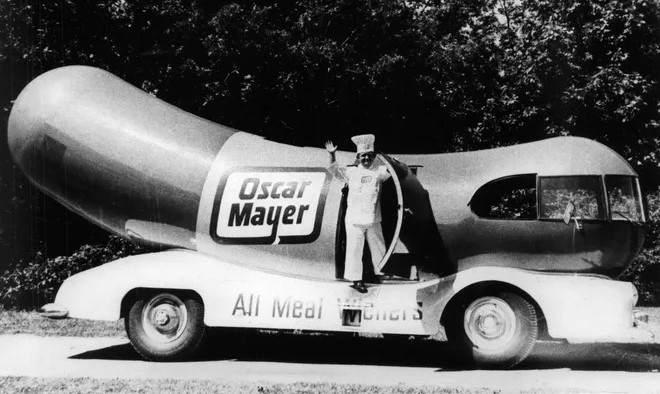
Oscar F. Mayer was born in Kösingen, Germany, in 1859 and immigrated to the United States in 1873. He found a job in the Detroit, Michigan, meat-packing industry and lived with a cousin. In 1876 he moved to Chicago with his cousin’s family and there he again worked in the meat-packing industry. By 1880 his thoughts turned to having his own business making sausages for the burgeoning German community in Chicago.
With his brothers, Max and Gottfried, he rented a shop and began making and selling sausages. It was successful enough that five years later the landlord gave Oscar an ultimatum—pay much more in rent or move out.
Oscar was 29, recently married, with a child on the way. Business was good enough that, with his family (including his two brothers) he bought property nearby and constructed a two-story building with his shop on the first floor and his family on the second.
Business continued to be good and by 1893 he was a participant at the German pavilion at the Chicago World’s Fair. By 1900 he had over 40 employees making sausages, bacon, and lard. His horse-drawn delivery wagons delivered his products to stores throughout the city, the suburbs, and even to the neighboring state of Wisconsin.
By 1904 the company had expanded its product line still further and began emphasizing the brand name “Oscar Mayer.” By 1912 he was sufficiently established in Chicago that he joined with such Chicago notables as Philip Wrigley and Sewell Avery to form the Lincoln Park Gun Club.
In 1919 Mayer purchased a meat-packing plant in Madison, Wisconsin, and moved his business operation there. The plant greatly expanded Mayer’s sausage production. In 1924 the company changed the way its bacon was sold (it then had to be sliced at the butcher’s counter) by selling it in packages. This seemingly minor step was so revolutionary that the company received a patent for the idea.
Wrapping Mayer’s wieners with a distinctive yellow band came in 1929. Previously customers bought sausages in strings at the meat counter. At first individual sausages were wrapped with a yellow band that shouted “Oscar Mayer!” while the band also showed the federal inspection stamp of purity. Combining this innovation with packaging of a dozen or so wieners changed the Oscar Mayer brand from being a regional player into a national competitor.
While Oscar Mayer delivery vehicles always had the company’s name on them, making them stand out in a crowded and competitive marketplace was becoming a problem.
The solution came in 1936 when Carl Mayer, Oscar’s nephew, came up with the idea of the “Wienermobile.” The original Wienermobile was about 17 feet long and shaped like a hot dog. The General Body Company of Chicago built it using sheet metal on a chassis of its own design.
The driver’s seat was in the middle of the wiener, high enough that he could see where he was going. Meinhardt Raabe, who was “Little Oscar” and served as the spokesman for the company at the time, drove it all over Chicago and parts of the Midwest until World War II intervened, when gasoline rationing curtailed travel and it was scrapped for the war effort.
Raabe did movie work as well and was the Munchkin coroner in the 1939 movie “The Wizard of Oz,” where he declared the wicked witch of the east as “really most sincerely dead.”
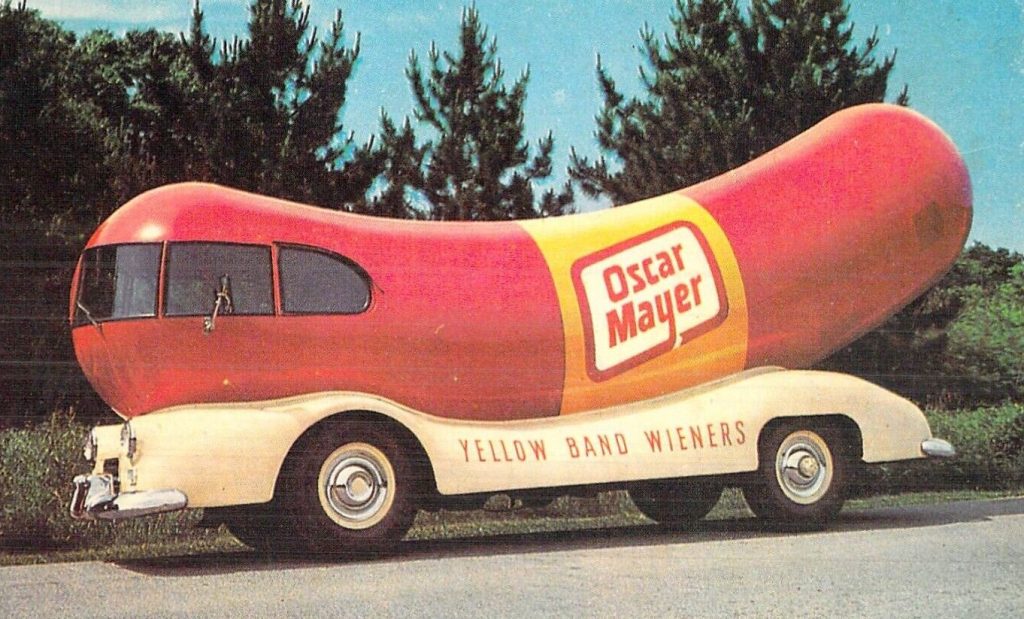
The 1952 version of the Wienermobile that so enthralled me was vastly different. For one thing, it was longer at 23 feet. And there were more of them, at least six were on the road by then. The driver’s position was now at the front of the hot dog with wrap-around windows for better vision. The chassis was a Dodge truck with a 350 horsepower V-8 engine, which provided enough power to go anywhere. Fiberglass replaced sheet metal for the body.
And George Molchan took the place of Meinhardt Raabe to become, at an inch short of 4 feet, the “Little Oscar” spokesperson for the company. Molchan piloted one of the Wienermobiles for the next 20 years, taking it to state fairs, grocery store openings, and parades.
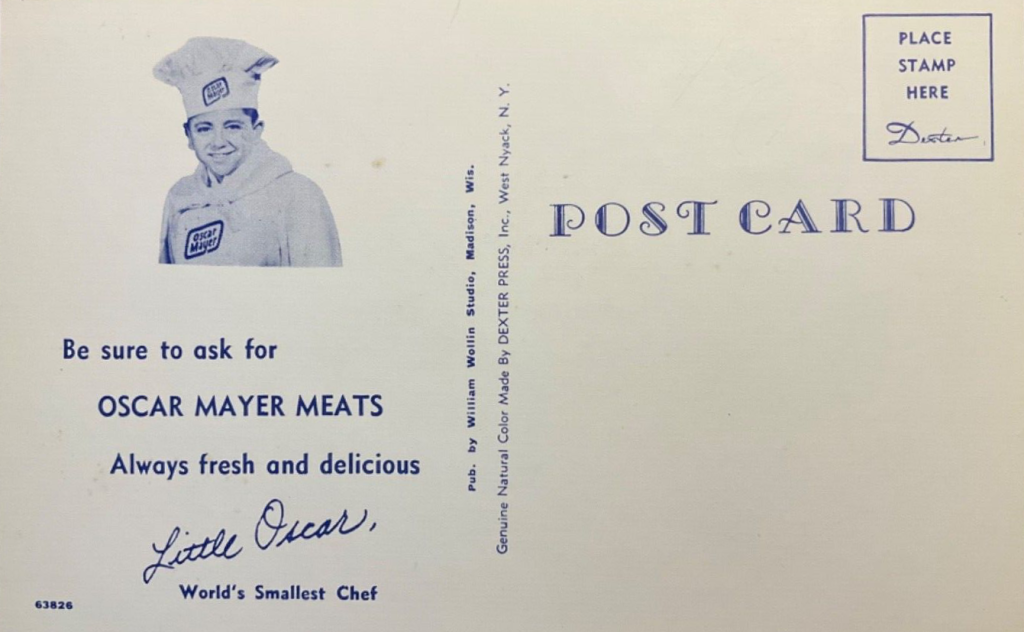
Over the years Oscar Mayer has gone from being an independent company to a brand of several giant food companies. The Wienermobile persists and the drivers (named “hotdoggers”) are post-college students hired for a single year. As new versions were introduced, the design changed, adding for example a bun beneath the hot dog. There was, briefly in 2008, a mini version of the Weinermobile, built on the chassis of a Mini Cooper.
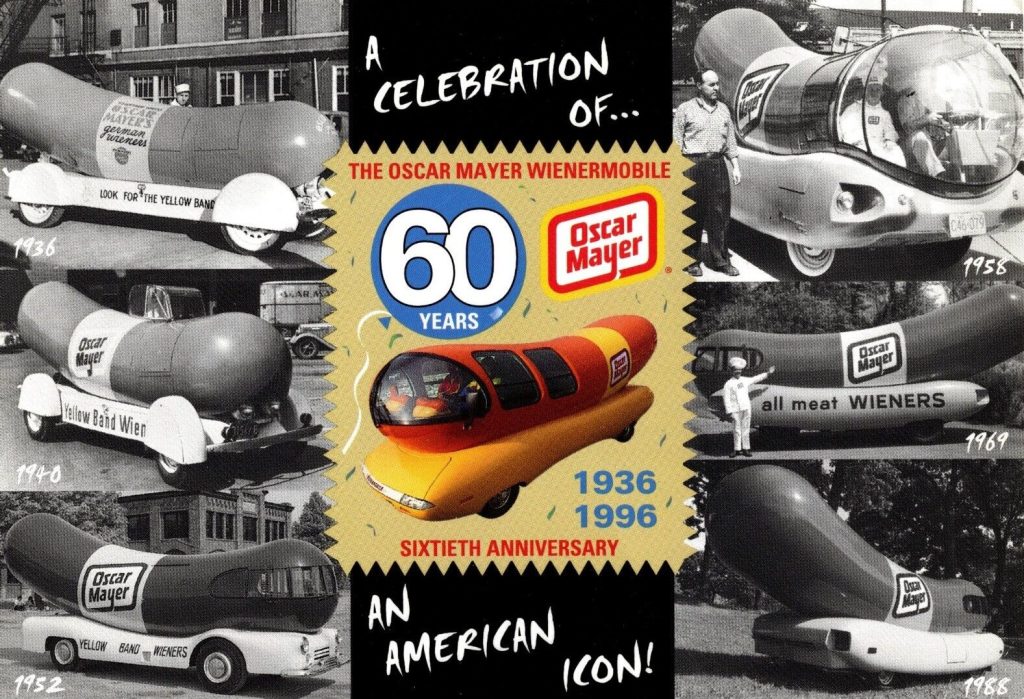
There have been 11 models of the Wienermobile. “My” version, the second (1952), is on display at the Henry Ford Museum in Dearborn, Michigan.
***
Join your fellow Oscar Mayer fans who have heard the Oscar Mayer Wiener radio jingle (1963) on the internet at: https://www.youtube.com/watch?v=QBBimEB8QgY, or you can watch the TV commercial for Oscar Mayer bologna (1976) at: https://www.youtube.com/watch?v=rmPRHJd3uHI.
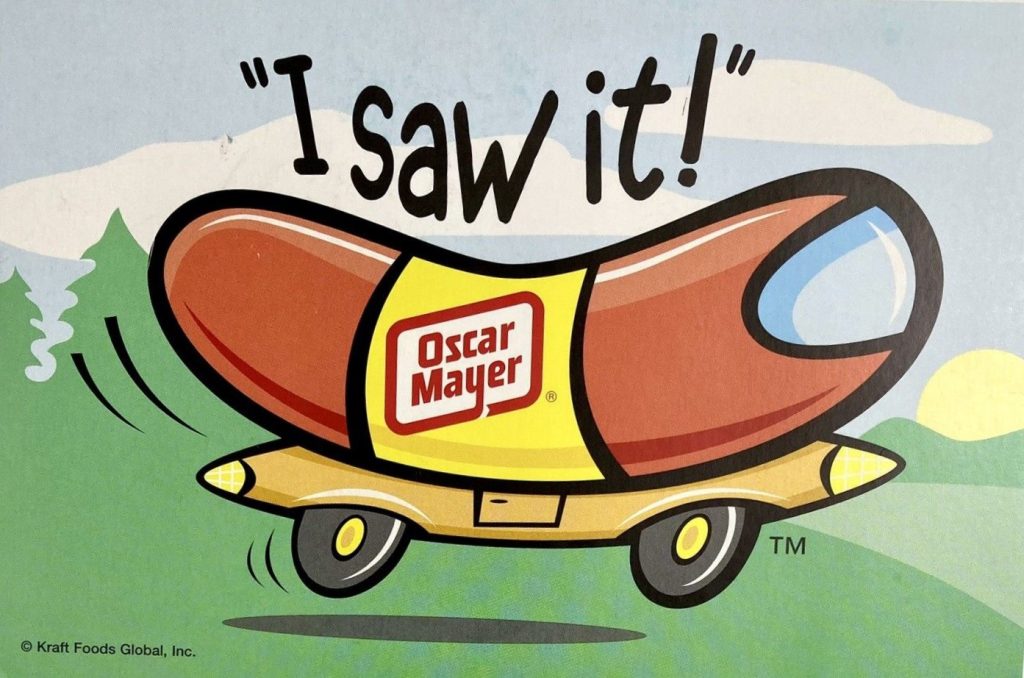
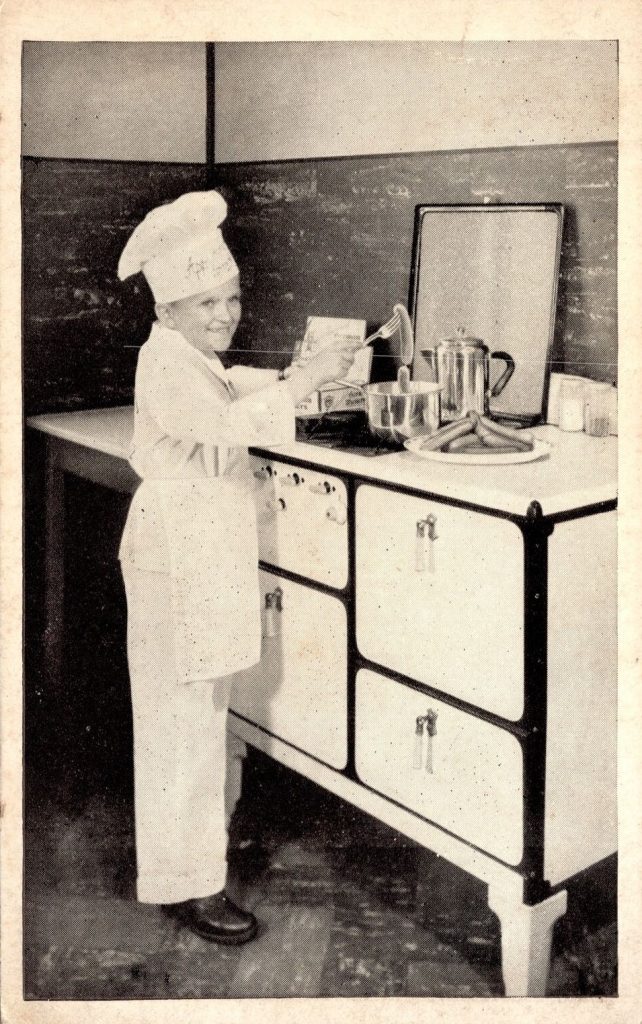
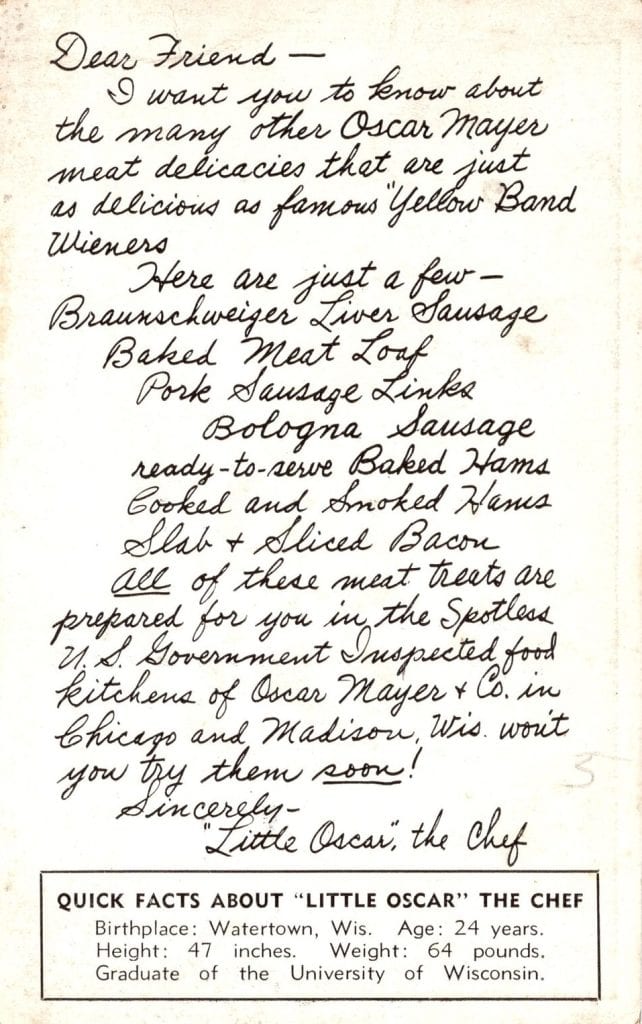
A great history of an iconic American brand and its advertising symbol.
I recently saw a Wienermobile parked in a lot in Indianapolis.
A hotdog of a story!
Fun story. What kid wasn’t overcome with a sense of excitement upon seeing this giant rolling hotdog. Classic Americana.
In 62 / second grade / the song was sang to me everyday on the playground